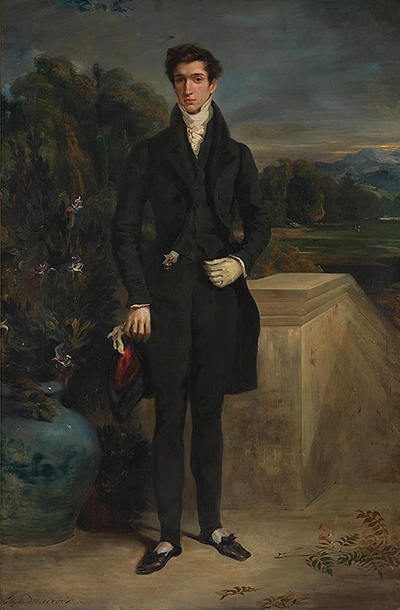This stylish portrait of Louis-Auguste Schwiter, a handsome young man who was actually a painter himself, was completed around 1826-27 and can now be found in the National Gallery in London, UK.
Individual portraits such as these were not the most common genre found within Delacroix's career as he normally took on more ambitious challenges, but there is still considerable artistic merit to be found within this painting. The fact that Louis-Auguste Schwiter was actually an artist himself perhaps encouraged Delacroix to create this work, understanding as he did that this figure would respect and understand his own style. The Frenchman at that time had developed a strong interest in English culture and would spend time in the company of a number of British painters, such as Richard Bonington and Thomas Lawrence. He also studied the portraiture of Thomas Gainsborough as well and some have argued that there are many elements of this region's style of painting within Delacroix's portrait found here. He was certainly someone who always looked beyond the immediate boundaries of his own nation in order to learn as much as he could, as shown with his series of Orientalist pieces at another point in his career.
If we study the composition here, we find a carefully planned portrait, with a figure in the foreground and a sprawling landscape set behind. The dapper young gentleman is stood just in front of some architecture, no doubt marking out some steps within a landscaped garden. One can feel Gainsborough here, with this merging of two genres, such as seen within his classic painting, Mr and Mrs Andrews. The English influences make it entirely appropriate that this artwork is now owned by the National Gallery in London, but for a period this painting was actually owned by French Impressionist and master of the human figure within art, Edgar Degas. For someone so respected for his own portraiture, it is quite a complement to Delacroix that he would have purchased this piece for his own collection. Not only did the artist visit London on occasion, but he also would have studied the work of British artists at the Salon, as they regularly exhibited there too.
Another element to throw into the mix regarding English influence would have to be Lord Byron, who was perhaps the master of Romanticist literature, with Delacroix being the best representative for Romanticist art. The connections were therefore strong for a period of his career, and this allowed Delacroix's style to again draw in another culture's contributions and further expand his own, already considerable, repertoire. We do know that Louis-Auguste Schwiter were actually lifelong friends and so this portrait would have been a true labour of love. He is genuine and polite to the model, portraying him as a graceful and honourable young man. Sadly, the looser brushwork initially found in this piece was rejected by the 1827 Salon exhibition, forcing the artist to rework it for several years after that. It was as if he wanted to advance to a new style but was prevented from doing so by the more traditional judges found within this highly influential and powerful institution.




